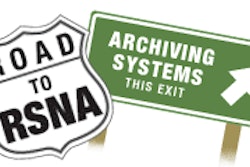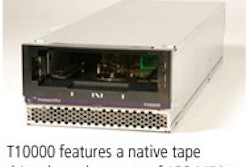In the latest installment of our ongoing series, PACS consultant Michael J. Cannavo addresses concerns -- real and imagined -- over the impact of the Deficit Reduction Act of 2005 on upcoming PACS purchases.
As the father of two teenage sons I'd like to think I've heard just about every excuse in the book, yet I never cease to be amazed when they come up with an excuse I've never heard of or used myself before. Lately, however, the PACS marketplace has put my kids to shame, offering more excuses for itself than my kids and I have combined.
The latest "dog ate my homework" excuse for "sales challenges" is the Deficit Reduction Act (DRA) of 2005. In case you're just joining us, the DRA was passed earlier this year and has a grab bag of budget cuts to U.S. federal programs, including $2.8 billion in cuts over the next five years to Medicare reimbursement for imaging studies conducted outside hospitals, such as at diagnostic imaging centers.
Several of the vendors who serve the imaging center market are already crying about DRA and its potential impact on PACS sales, evoking the infamous FUD factor among us -- Fear, Uncertainty, and Doubt. But let me cut to the chase early -- DRA could be a huge benefit for imaging center PACS sales, not a hindrance. It all depends on your perspective.
If you read the testimony given by Mark Miller, executive director of the Medicare Payment Advisory Commission (MedPAC) to the U.S. House Ways and Means Committee on March 17, 2005, everything he says points to the fact that imaging centers need PACS. Read it yourself by clicking here.
Much of what Miller says makes a lot of sense. In fact, the DRA itself makes a lot of sense as well. Unfortunately, too many companies continue to play Chicken Little, yelling "The sky is falling!! The sky is falling!! Sell sky!!" and then run and hide to find about any excuse they can to explain their poor performance.
In decades past it was DRGs (diagnosis-related groups). Then it was HMOs, PPOs, the Stark Amendment, Safe Harbors -- go ahead and pick your act or acronym, it matters little whether it's even related to healthcare or not, there is always some excuse. We continue to see company press releases that announce record revenues, yet find they are also accompanied by record losses.
To most people that makes absolutely no sense, unless you've read and understood what was written in the "Exploring PACS Secrets: It's broke -- fix it" series, and realize that PACS companies spend way too much money chasing both sales and rainbows. When you question the companies, their answers are well-cited and seemingly well-documented -- it's because of the way we do revenue recognition, it's about this, it's about that.
'Dog ate my homework'
I like this posting of excuses I read on Yahoo's Finance discussion boards better: "If the earnings are ever released, which of the excuses listed below will be used for the crummy results: 1) Deficit Reduction Act; 2) Irresponsible pricing; 3) Marin hedge funds; 4) Message board posters; 5) Weather; 6) Annoying accountants; 7) Sales force disruptions; 8) Management distractions; 9) Sexual frustration; 10) All of the above."
Unfortunately, the half-dozen or so smaller public companies just can't hide behind their numbers like some of the majors and private PACS vendors can. While private companies don't have to report earnings, rest assured many (although not all) have many of the same financial challenges as their public brethren. Most of the major PACS vendors luck out, as they are not required (or are not willing) to break out earnings for their PACS divisions.
Instead, most state earnings relative to their global healthcare divisions show them doing quite well lately. Those that do break out earnings for PACS show the obvious need for restructuring (or at least the need to restructure their answers), while others need to be bolder still and state their PACS division earnings without putting their imagination to work.
For every reason a PACS buyer or PACS vendor can give me not to buy or sell PACS at any given moment, I'll give you five others on why you should have PACS and how PACS can help solve the problem. It's called thinking outside the box, regardless of what color that box happens to be.
I've been dealing with the investment community a fair amount recently and got an e-mail from a client who wanted to know the validity of these two issues on a company's long-term financial viability:
- The impact of DRA on timing or ultimate size of IT purchase decisions
- Increasing competitive pricing pressures (specifically in the ambulatory segment of the market)
Let's examine each.
The DRA is an 80-page document that not only addresses Medicare changes but national dairy market loss payments, cotton competitiveness, watershed rehabilitation, FDIC issues, digital TV transition, and a host of other topics. While the goal of the DRA is to save $3.1 billion in Medicare spending in 2006, no reduction in payment is addressed in 2006, and its impact in 2007 is only $500 million, increasing about 20% per year through 2015.
In the next four years (2007-2010) payments are to be reduced by $2.8 billion, and over nine years (2007-2015) $8.1 billion. This is a far cry from what you may have read about. The savings also only come from the technical component of Medicare reimbursement -- not the professional component -- and caps payment at rates similar to those paid to hospital outpatient departments. Medicare payment parity between inpatient and outpatient facilities for the same exam? Gee, what a novel idea!!!
Furthermore, unless the radiology group owns the imaging center, how many radiologists do you think are going to be up in arms over this, considering they really aren't affected directly? To my point. The FUD factor -- fear, uncertainty, and doubt -- rises again.
If you examine the reasons for not buying PACS because of DRA, they all fall short. Even excuses for not buying CR alone pale.
Let's look at CR first. An imaging center that buys a CR unit that costs $75,000 would only need to perform about 15 studies a day to recover the investment over a five-year return on investment (ROI) period, and that is just looking at film costs, processor costs, and jacketing and storage costs alone. When you add the FTEs and time associated with pulling prior studies, the ROI or number of studies required to show an ROI drops by nearly half.
Imaging center PAC systems have dropped to well below $200,000, and single-modality systems are available for less than $100,000. While not nearly as complex as hospital-based systems that typically include a radiology information system (RIS) interface that can add $50,000 or more in cost, these systems more than get the job done.
Business managers might claim that the DRA will reduce imaging center revenues, but the one constant with any entity like an imaging center is that FTE and equipment costs for the most part all remain the same until you reach certain volume thresholds. PACS 101 says that PACS allows you to process up to 30% more exam volume without having to increase any of your fixed costs. If, for example, the CT threshold without PACS is 25 studies a day, with PACS you can do 32 studies without impacting any fixed costs. If revenue gets reduced (as many claim will happen), you merely have to increase volume.
Is this fair? Making lemonade from lemons is the hallmark of any successful healthcare provider given all the changes we have experienced in the past decade or so. Of course, increasing volume takes marketing but most imaging centers have marketing individuals already. In addition, many of the PACS vendors who specifically target the imaging center market offer various marketing assistance programs as part of their product offerings, so that helps as well.
Those who claim there just isn't the business out there need to look again at the statistics shown in Miller's "MedPac Recommendations on Imaging Services" (available in PDF form by clicking here) that lead to the DRA draft. Imaging showed the highest cumulative growth in services per beneficiary from 1990-2003 -- over 45% -- double that of all other physician services. MRI other than brain imaging showed a 99% increase over the same four-year period; CT other than head imaging showed an 82% gain, MRI brain 67%, CT head 21%, and even general x-ray musculoskeletal grew 24%.
It is apparent that CT has become the new chest x-ray in diagnostic imaging, but at a cost that ranges anywhere from six to 10 times that of a conventional chest x-ray. Is the information obtained from a CT any better than that which can be obtained from a CXR? The jury is out on that depending largely on the application where it is used. The purpose of DRA is to help reel in these costs, especially when performing the same exam on the same patient (CT head with and without contrast, for example).
Let's get back to the ROI. Seven additional CT studies per day can translate to over $250,000 in potential revenue generation per year at a net of only $300 technical fee per exam. That alone will not only pay for PACS but will offset any DRA-related losses as well. When you factor in film savings (anywhere from an additional $45,000 to $220,000), processor savings, and other savings found in most ROI models, you are looking at a win-win situation however you cut it.
PACS as commodity?
Increasing competitive pricing pressures (specifically in the ambulatory segment of the market) are also fairly easy to address. Few would argue that PACS has become a commodities market. Even in a noncommodities market, price (or at least value) has rarely been the deal maker or deal breaker when comparing apples to apples (which is critical). Unfortunately, when the going gets tough, the first thing companies and their reps reach for in their bag of tricks is a price reduction. There are exceptions to every rule, but they really are few and far between.
List price with PACS is really just a figment of anyone's imagination. Few, if any, PACS deals are made at or even around list price, with discounting typically starting at the 10% to 15% level and moving up from there. Generally, the higher the system sale price, the larger the discount. Most deals reflect discount levels of between 25% to 40%, with software-only deals providing discount levels as high as 70% or more. Surprisingly, most hardware is only marked up 10% to 20%, with highly competitive deals often just passing the hardware cost through at actual cost and charging a small hardware integration fee.
So why even have list price then? Basically, list prices are there to establish a baseline, even if the prices quoted do seem to be ones that change on almost a sale-by-sale basis. In the 130-plus PACS deals I've been involved in, price has only been the deciding factor a few times and that is when all others factors considered were pretty much even.
Many buying groups also provide prenegotiated pricing. It has been my experience, however, that you can probably do much better by reviewing and modifying the proposed configuration (most systems are overconfigured), saving up to 20% in hardware and software costs by modifying the configuration and up to another 10% by negotiating price or contract terms (warranty, clinical acceptance, etc.). These will be addressed in great detail in PACS Secrets: Part XI.
Competition in PACS is good. Unfortunately the more companies that get bought out, go under, or change direction, the less competition there seems to be. With the financial situations at many PACS companies worsening due to self-inflicted wounds, customers will be hard-pressed to make a clear-cut decision regarding their PACS vendor of choice, at least based on the company's financial stability (or lack thereof).
One thing remains eminently clear, though -- regardless of what you might hear or even think about PACS, there is no better time to buy a PAC system than now, and no better time to sell them as well. The "Three Stooges" excuses -- fear, uncertainty, and doubt -- will unquestionably continue to haunt PACS buyers and sellers who hide behind them, while others, less afraid, move past them into the digital future.
By Michael J. Cannavo
AuntMinnie.com contributing writer
May 17, 2006
Michael J. Cannavo is a leading PACS consultant and has authored nearly 300 articles on PACS technology in the past 15 years. He can be reached via e-mail at [email protected].
The comments and observations expressed herein do not necessarily reflect the opinions of AuntMinnie.com, nor should they be construed as an endorsement or admonishment of any particular vendor, analyst, industry consultant, or consulting group. Rather, they should be taken as the personal observations of a guy who has, by his own account, been in this industry way too long.
Related Reading
Part IX: Exploring PACS Secrets -- How to fix DICOM, April 20, 2006
Part VIII: Exploring PACS Secrets -- It's broke, fix it, April 6, 2006
The 2005 PACSman Awards: This PACS is your PACS, this PACS is my PACS, November 30, 2005
Part VII: Exploring PACS Secrets -- Pre-RSNA edition, November 28, 2005
Part VI: Exploring PACS Secrets -- State of the market, October 10, 2005
Copyright © 2006 AuntMinnie.com



















